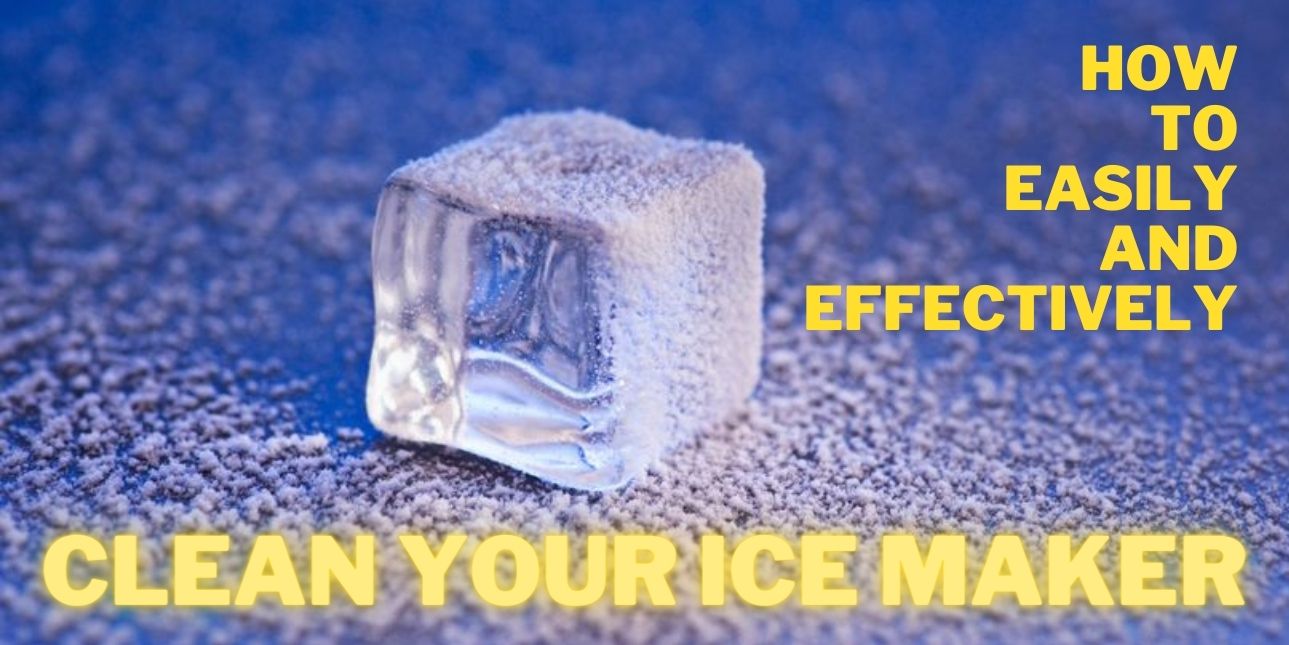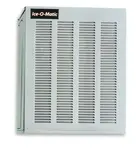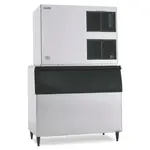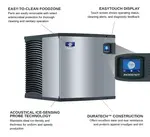What is the most important aspect of a great drink? The drink being cold, of course.
It can be such a simple concept but keeping drinks cold at any restaurant requires clean ice (or chilled mugs, but that is a topic for another blog). Ice is obviously made in an ice machine, and that ice machine needs to be fully operational at all times for the benefit of the restaurant.
A large part of functionality is cleanliness, which is why it is imperative you know how to properly clean your ice maker. Ice is considered a food product by the FDA, so it is necessary that the machine that produces it is sanitized with the same care you give to food preparation.
Commercial ice machine cleaning unsurprisingly calls for more attention to detail than, say, a homeowner cleaning out the ice bowl before hosting a party. Despite the difference, commercial ice machine cleaning can be quite straightforward if you know what you are doing.
Why is Cleaning Your Ice Machine So Important?
It is recommended to have your ice maker deep cleaned twice a year by professionals, but in the interim, regular sanitation is crucial.
Aside from compliance with the FDA, maintaining a clean ice machine is a necessity for a successful restaurant. As much for the practical reasons, a clean ice machine signifies a competent business. It means the unnoticed essentials are covered.
Of course, the practical reasons still rank higher on your ice machine cleaning priority list. Not only must the plumbing be sufficient to prevent contamination, but the water supply must also be safe and sanitary at all times. Commercial ice machines are prone to buildup of bacteria if not cleaned regularly, which could be disastrous if left unchecked.
Ice makers, no matter the type, are highly susceptible to contamination through the formation of biofilm. Biofilm allows harmful organisms to survive and thrive and is difficult and expensive to remove once established.
Closely linked with the ice machine cleaning process, a clean ice machine water filter is paramount to the ice maker’s overall effectiveness. On average, you should change the water filters every 6 months unless the filter system says otherwise. Obstructed filters reduce the water’s purity and capacity, so be sure to avoid letting this aspect of the cleaning process slip your mind.
Any machine needs upkeep to function at peak efficiency, and an ice maker is no different. The ice machine is a vital piece of equipment for any business, so it is important to take its cleaning seriously. This means cleaning the ice maker, and then sanitizing it afterwards. There is a distinct difference between the two, so let’s break them down.
How to Wash and Sanitize Your Ice Machine
Ice Maker (how to clean an Ice maker) 
Ice machines’ maintenance requirements vary from machine to machine, but most models follow a fairly uniform cleaning process. Please refer to your specific machine’s handbook for the appropriate procedure, however the following are the general steps for how to clean your ice maker. This includes cleaning the interior and exterior as well as sanitizing for an all-around job well done.
1. Cleaning the Inside of the Ice Machine
• Turn off the ice machine and clear any remaining ice for an empty reservoir.
• Enable the ice machine’s clean setting.
• Add the prescribed cleaning solution to the basin as it fills with water. The amount of ice maker cleaning solution used depends on your brand and model of machine.
• Allow the ice maker to run its course through the clean cycle.
• Once the wash cycle is complete, turn machine from CLEAN to OFF.
• Remove internal pieces, and clean thoroughly with detergent.
• Scrub the interior of the machine with a clean rag, water, and soap while internal pieces are still removed.
• Replace internal parts.
• Turn ice machine back on.
2. Cleaning the Surface of the Ice Machine and Its Surrounding Areas
During the ice machine cleaning process, it’s crucial to focus on the interior and exterior of the unit as well as the surrounding area. Poor hygiene practices can lead to grime building up and an unhealthy environment for you and your customers. Let’s look at some guidelines on how best to clean the exterior of your unit.
• Use apt cleaning supplies: Wipe surfaces down with a damp rag or muslin cloth to get rid of dirt and grime laying on the surface of the unit.
• Turn your attention to the immediate surroundings: Clean the area around the ice machine as often as necessary. Doing so helps to ensure your ice machine operates cleanly and efficiently.
• Remove any grease that persists: If any greasy particles remain after sanitization, clean the grease using a solution of dishwashing liquid and water. Do not risk damaging the finish by using any abrasive cleaners on the outer panels or trim.
3. Sanitizing the Ice Maker
In order to sustain a clean ice maker, it is imperative that you disinfect the unit after proper cleaning has occurred. While washing the surface of the machine removes any muck and grime that you can see, disinfecting aids in diminishing the quantity of harmful bacterium to an acceptable degree. If you are not familiar with the process of sanitization, your official guide is as follows.
• Create your sanitizer: Mix your ice machine sanitizer with lukewarm water to create a diluted solution. You should aim for 3 gallons of water for every 2 ounces of sanitizer.
• Sanitize removed pieces: Use half the cleaning solution to disinfect all parts and pieces you’ve detached from the unit. Use the disinfectant on all sides of the removed components, or you can soak them in the solution. It’s crucial that you refrain from washing the components after disinfecting.
• Disinfect remaining surfaces: Use the remaining solution to cleanse all exterior portions of the ice maker.
• Replace disinfected components: Once sterile, put the ice maker back together.
• Wait for the disinfectant to activate: You must allow adequate time (about 20 minutes) for the unit to disinfect before resuming use.
• Turn the power on: Once the 20 minutes is up, turn the power back on and resume use.
• Replenish the units water supply: Once your unit has adequate water, you must add the required chemicals to the unit.
• Turn on the unit’s automatic features: Once the disinfecting cycle is complete you may program the unit to begin producing ice.
• Monitor your unit: After finishing the cleaning cycle, it’s advised you monitor two cycles, noting the temperatures and length of ice production. It is imperative that (post-cleaning) you dispose of the first round of ice produced.
Proper Ice Machine Cleaning Can Make All the Difference
Utilizing these best practices to clean your ice maker will pay noticeable dividends. You will never have to worry about the quality of your ice, and your machine should hopefully have a longer functioning shelf life.
Clean ice means clean water and other beverages for your customers. It may go overlooked, but any unsanitary facet of your ice machine has a trickle-down effect when its ice eventually makes its way into served drinks. With a fully cleaned ice machine, you can rest easy knowing your customers have fresh clean ice to enjoy with their drinks.
















